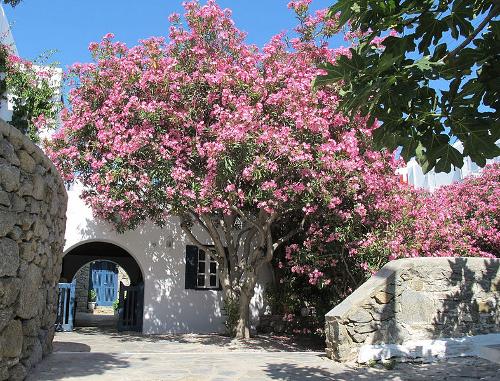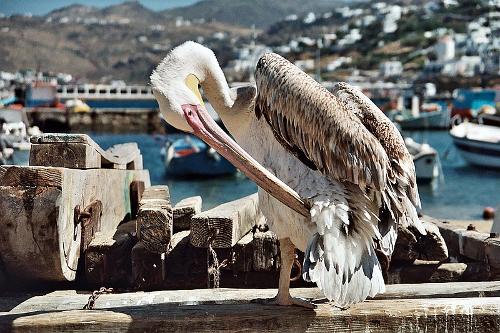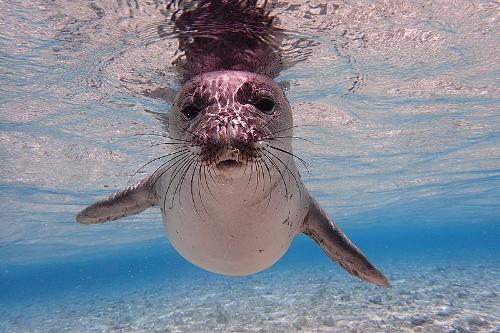MYKONOS
Plants and Animals

Plants and Animals
Popular destinations GREECE
| Aegina | Alonissos | Andros |
| Chios | Corfu | Crete |
| Hydra | Kalymnos | Karpathos |
| Kefalonia | Kos | Lefkas |
| Lesbos | Mykonos | Naxos |
| Paros | Patmos | Peloponnese |
| Poros | Rhodes | Samos |
| Santorini | Skiathos | Skopelos |
| Spetses | Thasos | Zakynthos |
Plants and Animals
Plants
The landscape of Mykonos is characterised by stony hills covered with herbs, low shrubs and the occasional low pine, cypress and cedar tree.
 Oleander, MykonosPhoto: Nolege CC 4.0 no changes made
Oleander, MykonosPhoto: Nolege CC 4.0 no changes made
There are many aromatic colourful plants such as marjoram, thyme, basil, lavender and oleander.
Animals
There are few large native animals on Mykonos: wild hares, feral cats, badgers and partridges. Man introduced sheep, pigs, goats, horses and donkeys.
 Pelican, MykonosPhoto: Heiko Gorski CC 3.0 no changes made
Pelican, MykonosPhoto: Heiko Gorski CC 3.0 no changes made
Mykonos, like the other Cycladic islands, does have an extensive bird life that benefits from two very important ecosystems: the Panormos and Ftelia wetlands. Lagoons formed after rainfall become important resting places for millions of migratory birds on their way south. Steep coasts, caves and gorges provide ideal habitats for birds such as the egret, cormorant, hawk eagle, kestrel, peregrine falcon, Turkish turtle, little owl, blue rock thrush, carrion crow, pelican and goldfinch.
 Monk Seal, MykonosPhoto: Anim2600 CC 2.0 no changes made
Monk Seal, MykonosPhoto: Anim2600 CC 2.0 no changes made
The marine fauna around Mykonos is also quite impressive, including the Mediterranean monk seal, dolphins, sea turtles and many species of fish. In 2011, a dead 12.5-metre-long fin whale washed up on the Mikri Venetia beach in West Mykonos. Fin whales are common in Greek seas, but particularly so in the Ionian Sea.
Sources
Wikipedia
CIA - World Factbook
BBC - Country Profiles
Last updated November 2025Copyright: Team The World of Info